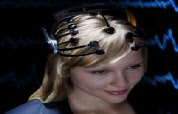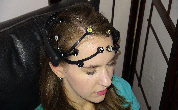
The future in tinnitus treatment
Home

Call us on +61 8 8333 1010



Ten Important Management Strategies
________________________________
Apply these simple techniques to manage your tinnitus and reduce your level of tinnitus perception.

Call us on +61 8 8333 1010
Home
We now know that tinnitus is not a disease of the auditory system alone. It has already
been postulated by Jastreboff more than 20 years ago (Jastreboff 1990), that the
difficulty to ignore tinnitus, the annoyance of tinnitus, the anxiety that tinnitus
becomes worse, the irritability and the concentration difficulties are related to
functional changes in non-
Neuroimaging studies in tinnitus patients have helped to identify the involved networks in detail (De Ridder et al. 2011). Thus altered activity in the central auditory pathways is not sufficient for tinnitus perception. This explains that many patients with hearing loss (and consequent increased activity in the central auditory pathways) do not perceive tinnitus. Only when the auditory activity is connected to activity in the “attentional network” the tinnitus is consciously perceived (De Ridder et al. 2011a). If this activity is further accompanied by activation in a “distress network” the patient perceives tinnitus distress. Imaging studies have also demonstrated that the hippocampal area, which plays an important role for memory, is involved in chronic tinnitus.
This finding indicates that there may be a “tinnitus memory”, which perpetuates tinnitus perception. Whether the tinnitus signal is perceived as important and whether the attention focus is kept on the tinnitus, depends on activation of the salience network (De Ridder et al. 2011). A high salience of the tinnitus signal in turn may increase the perceived loudness of tinnitus by causing increased amplification of the signal in auditory pathways (Rauschecker, Leaver, & Muhlau 2010). This principally useful mechanism of the brain to amplify important information results in case of tinnitus in a vicious circle that contributes to the perpetuation of tinnitus.
Noteably it is important that the different brain networks involved in tinnitus may differ from patient to patient, depending on the specific clinical characteristics. Thus for example in people that are distressed by their tinnitus, the brain activity that is relevant for tinnitus perception is connected to increased activity in the distress network. Moreover earlier findings that the brain activation patterns changes with increasing tinnitus duration have been confirmed (Schecklmann et al. 2011;Vanneste, Van de Heyning, & De Ridder 2011). This indicates the importance to differentiate between different forms of tinnitus.
Many individuals with tinnitus have abnormal oscillatory brain activity (Weisz et al. (2005). PLoS Med., 2: e153). We have found that by using techniques which contribute to the normalization of such pathological activity (e.g. by neurofeedback, relaxation, hypnosis and counselling techniques) we obtain significantsignificantly reduction in tinnitus intensity and other factors as measured against the Tinnitus Handicap Questionnaire (THQ) and Tinnitus Functional Index (TFI).

More medical-





